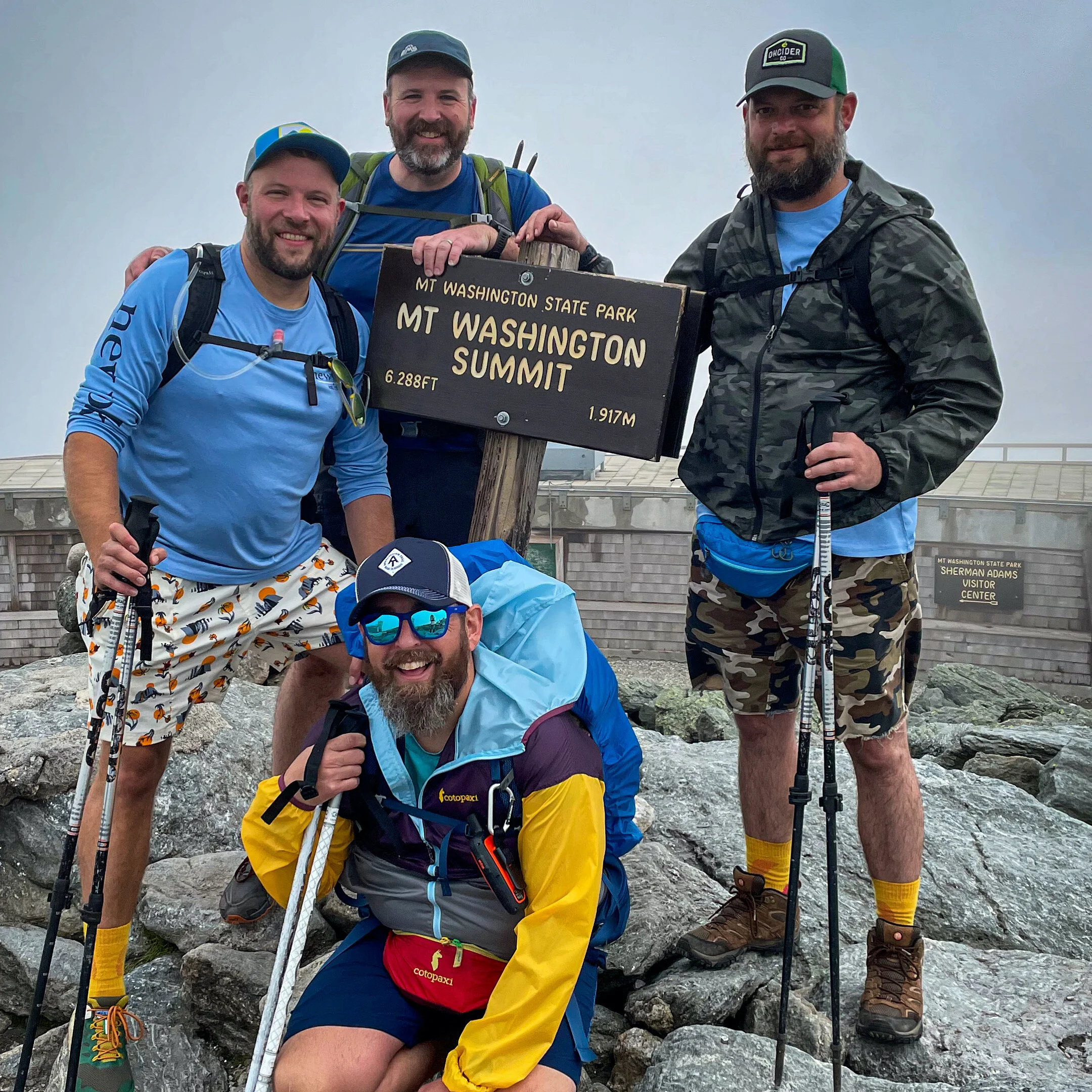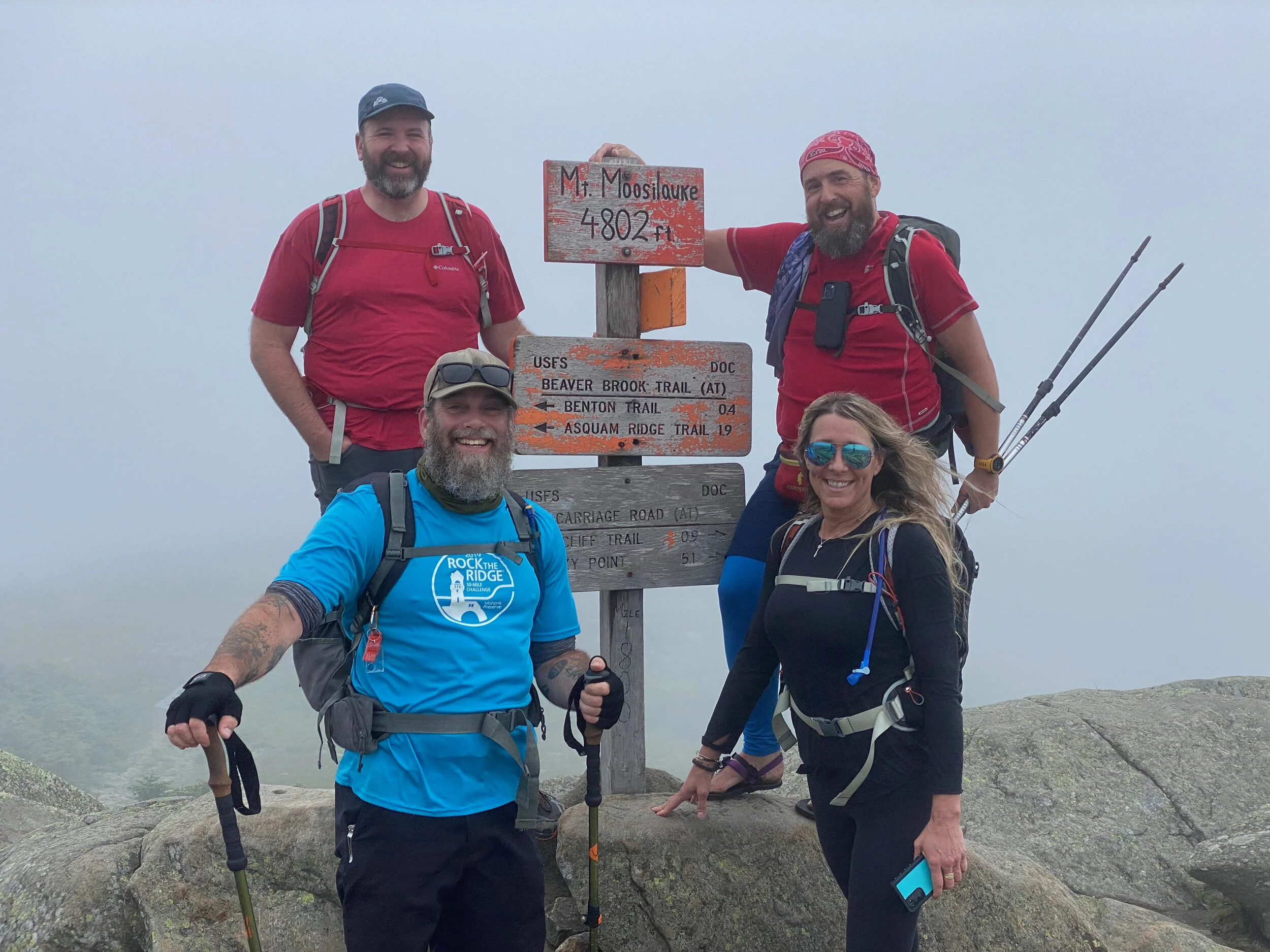Climbing Mount Washington (6,288') - Ammonoosuc Ravine, Crawford Path, Gulfside, and Jewell Trails
At 6,288 feet in elevation, Mount Washington is the highest mountain in New Hampshire and the highest mountain in the northeastern United States.
Part of the Presidential Range of the White Mountains, Mount Washington reaches well into the alpine zone and is home to what some consider the world’s worst weather. The mountain is often shrouded in clouds with weather that’s more reminiscent of areas of the arctic far to the north.
While the weather wasn’t great for our climb, it wasn’t that bad either with temperatures in the 50s and 60s and winds in the 30mph range. For the most part we were hiking in the clouds once we reached the alpine zone, but we did have occasional views as the clouds would blow out. By the end of the hike, the clouds were definitely lifting and we could see the climb we had just made.
We were joined on the hike by our friends David and Paul, the Oklahomo Hikers on YouTube (their video of our climb up Mount Washington is here on YouTube). This was their introduction to northeastern hiking and it was also Moe’s birthday, so we decided to go big with a Mount Washington climb, while we were all spending time in New Hampshire!
To make the best of the bad weather and take what we consider to the be the most mellow route up and down Mount Washington we ascended via the Ammonoosuc Ravine Trail to Appalachian Mountain Club’s Lakes of the Cloud Hut. At the Hut, the Ammonoosuc Ravine Trail ends and we joined the Crawford Path to the summit of Mount Washington. From the summit, we descended on the Gulfside Trail to the Jewell Trail, which we followed down to the Cog Train base station and back to the Ammonoosuc Ravine Trailhead parking where we started.
A note, the White Mountains, and especially the Presidential Range are home to many, many trails and are a place where a paper map really comes in handy. Our standby is the Appalachian Mountain Club’s White Mountains Map (the set or the single map), but there are a couple of other maps for the area that are just as good. Don’t rely on AllTrails or other similar online products, not all trails are shown on these apps. That might not be a big deal on most trails, but in the alpine zone and rugged terrain of these mountains, knowing where you are can be the difference between good outcomes and very bad outcomes.
While we consider this the best route to introduce folks to hiking Mount Washington, it is by no means an easy walk. The Ammonoosuc Ravine Trail is a rough, steep trail, that in places climbs up and over open rock ledges. Footing can be difficult and you are gaining elevation very quickly. That said, the route is generally within the trees and offers less exposure to weather than other routes.
Once at the Lakes of the Clouds Hut, the route up the Crawford Path (which is also a section of the Appalachian Trail) to the summit of Mount Washington is significantly more moderate in steepness and the trail’s treadway has been improved to the point where hiking on the trail is not overly difficult. Even so, you’ve already climbed more than 2,000 feet in elevation and have a significant climb from the hut to the summit (even though on a clear day, it doesn’t look that far).
From the summit of Mount Washington down to the Jewell Trail, the route along the Gulfside Trail (which is also the Appalachian Trail), is generally not a difficult ascent, though the treadway is less improved than the Crawford Path, necessitating some rock hopping as you descend. The further you descend towards the Jewell Trail, the more rocky the Gulfside Trail becomes and the more you need to carefully watch your footing.
Once you’re on the Jewell Trail, there is a section of very rocky descent as you make your way down the ridge. As the trail drops below treeline and back into the forest, the tread improves, and while rocky in a few places, is really just a steady, moderate to steep descent on good tread.
Our total hike was 10.4 miles with 3,947 feet of elevation gain.
Need help completing a hike like this? Our outdoor guiding company, Hike on Guides offers Outdoor Hiking, Backpacking, Trip Planning, and Camping Guide Services. We’re happy to work with you to plan a hike and/or backpacking trip that works for you!
Gear we used on this hike:
Nutrition and Hydration for this hike:
(Product links are affiliate links, so if you purchase something through them, it helps us out)






